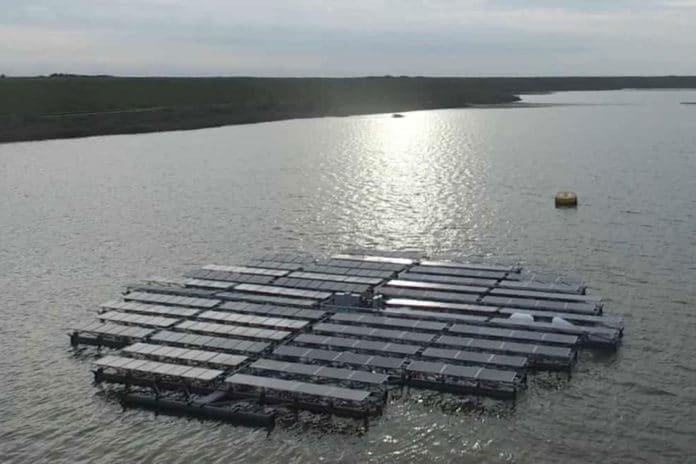Have you ever imagined a whole island made of solar panels? Hmm… It sounds quite weird and unreal!
Dutch engineers are trying to make it possible. They are developing what will be the world’s largest archipelago of islands made up of sun-tracking solar panels. Rising resistance to the development of wind generators or fields of solar panels on land has led the renewable power business to search for alternate choices. Large islands of solar panels are under development or by now set up in reservoirs and lakes across the Netherlands, China, the UK, and Japan.
In the evolution that is to turn into the biggest of its kind on the earth, the construction will start this year on 15 solar islands on the Andijk reservoir in North Holland. That island will contain 73,500 panels and will have the sunflower-like ability to move to face the light.
In the initial stage of the project, including three islands, each one of which will be 140 meters in diameter, is because of being completed through November, as soon as the migratory season for birds has come to finish.

The managing director of Floating Solar, a solar panel provider, Arnoud van Druten said, “We would like to have started earlier but because of the environmental issues regarding bird seasons, there is only a limited period in the year, these three months, that we can put anything in the water.”
Together with another mission at Hoofddorp, close to Amsterdam, which will include static solar panels the water company PWN, that owns the land on which the farms will be located, is expected to create enough energy to power 10,000 households.
Van Druten stated, “The sun-tracking gadget comes to 3 buoys for anchoring with a cable around it, which turns the island and on the similar time helps to keep the island in combination. It guarantees the island is became in opposition to the solar.”
“You’ll be able to have two choices- one is monitoring robotically to the sunshine. However since the place of the solar isn’t anticipated to modify an excessive amount of within the coming years, a set of rules can also be simply programmed.”
One more feature of the island is that they can reposition themselves in extreme weather to reduce damage.
“Andijk is a very severe environment,” Van Druten said. “So we have optimal solar tracking, which is generating extra energy, and weather risk management [WRM], which is a technology that makes sure that if an island is under severe pressure due to wind or storms, it moves itself automatically in a position so the wind and waves travel easily through the island. We have already tested that the system can sustain, without WRM, wind speeds of around 60mph.”
For neglecting the damages that may happen in the reservoir’s ecosystems, half of its surface area will be covered by the islands. The additional advantage of floating solar panels is that the water cools wiring.
“There may be a large number of a drive from drive environmental teams about wind generators, so the opposite to land is water. However, what does it do to the water high quality?” Van Druten stated. “Our design has the least have an effect on at the ecosystem as imaginable so the water high quality stays virtually similar.”
“On the similar time, since the island is shifting, we don’t have a set shadow form.”
However, the critics of floating solar farms say they are ugly and reflect the light, annoying the nearby communities. Whereas, Van Druten said the fusion of light on the water created a blurring effect that made the panels disappear from afar.
